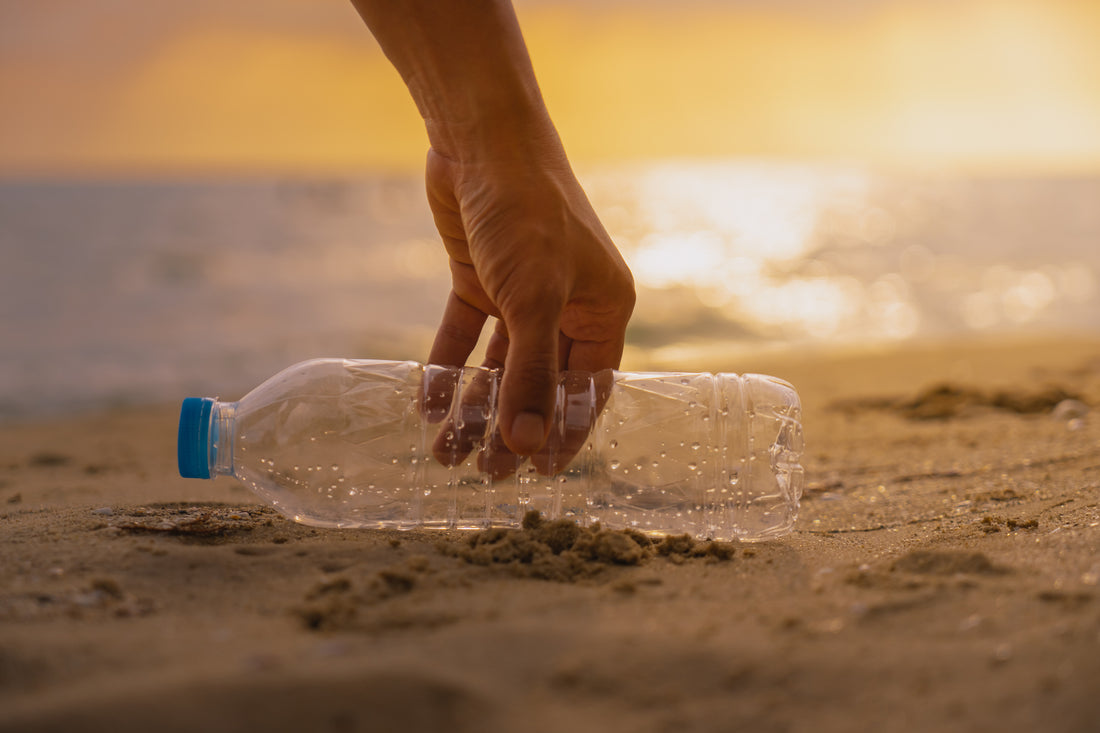Reducing Our Impact Through a Zero-Waste Lifestyle

Share
The planet is currently experiencing a mass extinction event. Ecosystems are being destroyed. The ocean is being polluted with chemicals. Forests are getting cut down. The atmosphere is filling with toxic gases. Global temperatures are rising. The health and survival of the planet as we know it is at stake, and this catastrophe is primarily the result of human activity.
The impact of our waste on the planet
With nearly eight billion human beings living and depending on this planet, we need to individually and collectively discover ways to reduce our impact, and do our best to lead more sustainable lives. While there is certainly need for large corporations and industries to shift their methods of operation, there are plenty of things that we can individually do to help the earth, and we can begin with assessing the ways we personally contribute to the pollution of the earth, and consciously deciding to shift to a zero-waste lifestyle.
A zero-waste lifestyle can be a challenging thing to accomplish in our modern culture, where most of us habitually throw items into the garbage without any care for where they are going or who has to process them. But our garbage does not just disappear because we throw it in a bin. It is sent to landfills where they often bury the garbage, let it sit, or burn it, polluting the soil and releasing toxic gases into the atmosphere. If it doesn’t make it to a waste management facility, it will probably find its way to a natural ecosystem, a river, and eventually to the ocean where it will likely contribute to the massive area of garbage known as The Great Pacific Garbage Patch, which, according to a three-year study published in Scientific Reports, is about 1.6 million square kilometers in size.
Every year, 5 to 14 million metric tons of plastics enter our ocean, on top of the estimated 150 million metric tons that currently circulate our marine environments. Many of these plastics are ingested by marine life, and when marine life is then consumed by humans, these microplastics physically damage organs and leach hazardous chemicals into the body.
Clearly, we need to reduce the amount of waste we produce, and while a zero-waste lifestyle may differ from some of the modern conveniences we are used to, it is totally possible to do.
Begin with finding your “why”?
Finding a reason why you’d like to stop producing waste can help you to remember the importance of what you are doing, and can assist you in making this a way of life that is driven by purpose. Are you a surfer who can’t stand to see plastic wash up on the beach? Have you experienced a health scare or issue after using a product that contained toxic chemicals? Are you fed up with our political leaders not caring about climate change? Find your “why” and come back to it often. This will help you to stay on track and remain inspired to lead a zero-waste lifestyle; and since we don’t live in isolation, it can be inspiring to know that by leading a zero-waste lifestyle, you are influencing everyone you interact with, and essentially, affecting the web of life as a whole.
Assess your waste
The easiest place to start reducing your waste is to assess where you’re already making a lot of waste and focusing on those areas first. Even if you can’t solve every aspect of that area right away, you can start to prioritize the steps you want to take.
Prioritize
Maybe you realize you’re throwing away a lot of trash by getting take out or to-go coffee. If this is the case, prioritize making coffee at home and taking it in a reusable mug, and meal prepping and packing your lunch instead of ordering take out. Maybe you purchase a lot of beauty products and realize you’re throwing away tons of shampoo, lotion and soap bottles. Look into bulk beauty items and sustainably made products instead. Looking at the big picture of all the waste in your life can feel a bit overwhelming, but once you break it down and focus on one area at a time, it becomes so much more doable.
Replace items as they run out
If you have the money, and the desire to do a full transformation of your life all at once, getting rid of every toxic product and replacing it with something healthier and more sustainable, then go for it! However, this approach is not the most practical for the majority of people. It is far more practical to purchase zero-waste alternatives once your non-zero waste items run out. Because buying something then throwing it out unused is also pretty wasteful.
For example: if you just spent a lot of money on razor refills, use them up. No sense throwing away an unused item. But once you run out, switch to a zero-waste alternative like a safety razor. Often times the price of a zero-waste item will be equal to, if not cheaper, than the non-sustainable alternative.
Research how to properly recycle old items
The goal is to lead a zero-waste lifestyle, so it doesn’t make much sense to throw away old items in the trash now. Recycle whatever you can. Compost whenever you can. Find a way to reuse an old item whenever you can. Donate items, or gift them to friends. The intention is to be responsible for our waste and to keep it out of landfills. Remember, it’s a process! It won’t happen overnight, but the fact that you make any effort at all is a revolutionary act! Do the best that you can, and strive to continually improve the ways in which you consume and dispose of resources.